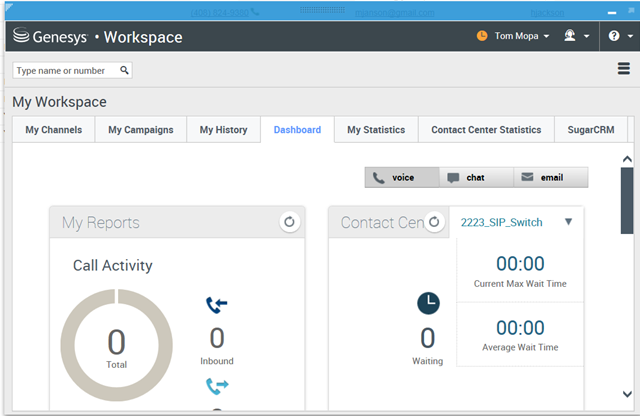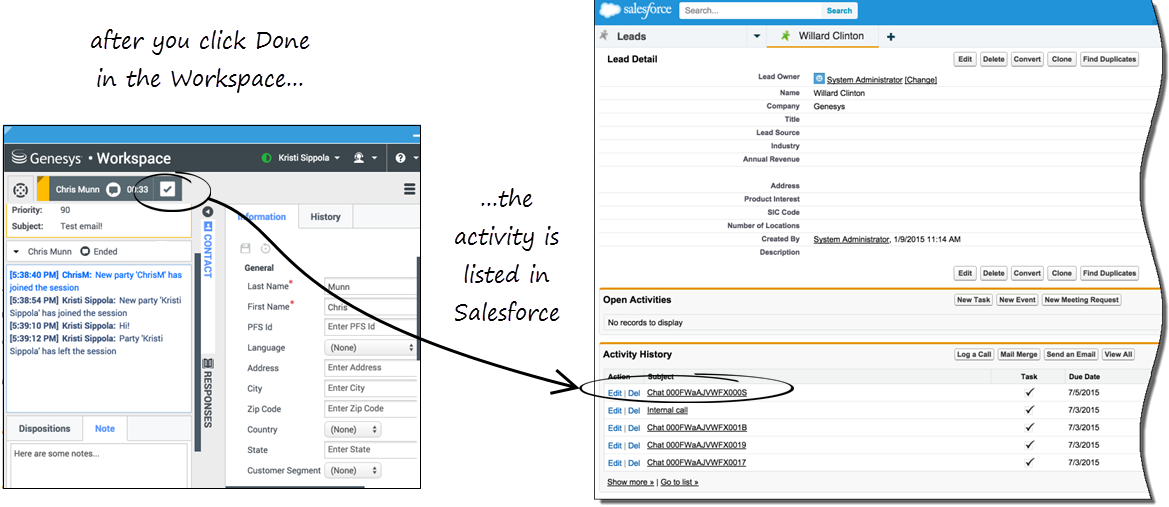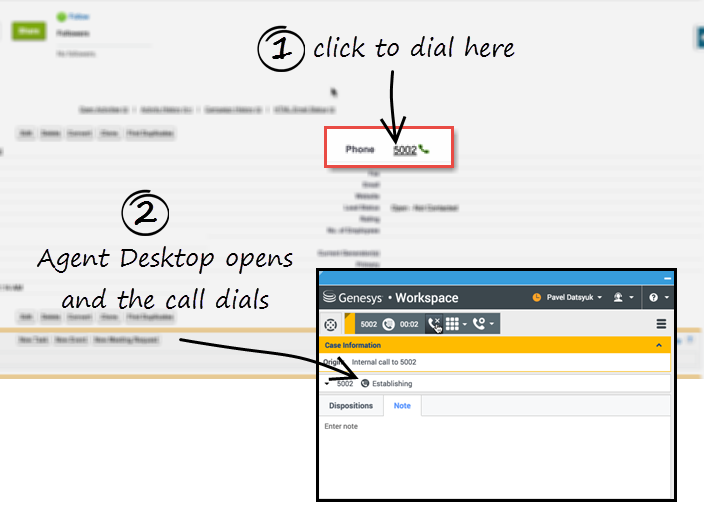Gplus Adapter in Agent Desktop Mode
The Agent Desktop deployed in sales or service Console is an interaction management desktop that provides you with a robust subset of features that are available in the full Workspace Web Edition agent desktop. This product adds more functionality to your softphone and seamlessly integrates the adapter activity in your sales or service console.
How do I access the Agent Desktop Console?
When the Agent Desktop is configured in your sales or service console, all you have to do is click the Workspace icon ![]() that is typically located at the bottom right corner of your screen.
that is typically located at the bottom right corner of your screen.
You can click anywhere in the blue bar along the top of the Agent Desktop window to drag it to a new position within your browser window. You can also undock Agent Desktop by clicking the arrow at the top right of the window. This opens Agent Desktop in a new browser window that you can resize and drag to a new location. If you want to redock the window, just click the arrow again and the window returns to the standard location.
Related Links
- For administrators—To integrate the Agent Desktop console, see Installing and Configuring Agent Desktop with Salesforce Console.
- For agents—To learn how to use the Agent Desktop, see Agent Desktop Help.
How does the Agent Desktop Console Integrate with Sales and Service Consoles?
The Agent Desktop console includes some features that integrate with your sales or service console, such as screen pops.
Screen pops are contact records that are displayed when an agent receives or makes a call, chat or email in Agent Desktop. Your console can display one or more related records, depending on what information it has about the customer. For example, if a customer enters their case number before they talk to the agent, your console displays the case automatically when the agent receives or makes the call in Agent Desktop. If there is no contact information available, the New Contact page is displayed.
Other integration points include:
Activity History
When you mark a voice, chat, inbound email, or outbound campaign interactions as done (Mark Done), the details about the interaction are added to the contacts's activity history in Salesforce.
The types of information that are saved in the activity history include:
- call duration
- call type
- case data
- call UUID
- disposition
- notes
- time stamp
- chat transcript
- email subject
Voice calls or chats that could not be established are not saved in the history. When a voice call or chat involves multiple parties, such as consultations and conferences, the activity is saved as only one interaction.
Using Click-To-Dial
With click-to-dial, all you have to do is click a phone number within your console and the Agent Desktop automatically dials it and starts the call. For example, you might search for a contact and then click the related phone number.



